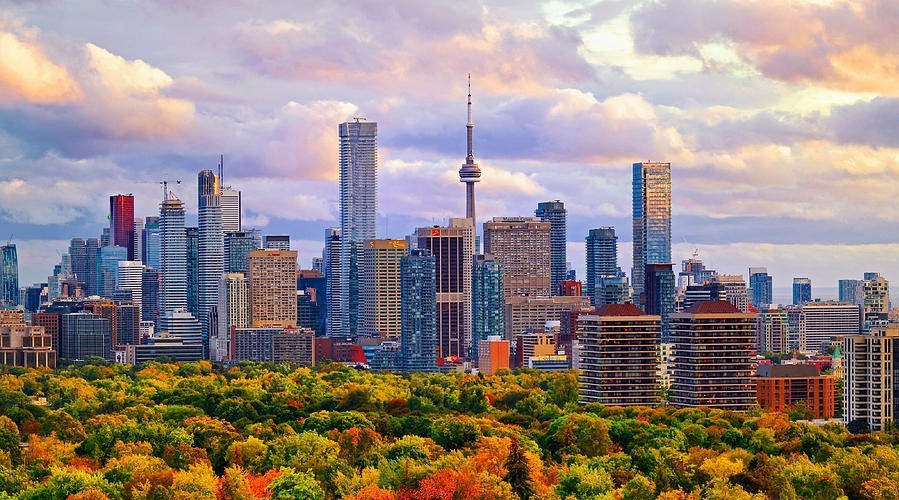
September marked the transition from the slower summer market to the busier fall market in the Greater Toronto Area (GTA). Every year, we generally see an uptick in sales, average selling price and listings after Labour Day, and September 2021 was no different.
According to the Toronto Regional Real Estate Board (TRREB), there were 9,046 sales reported which marked the third-highest September on record. This is 18 per cent fewer than reported last September, however up nearly 5 per cent higher from August and the first month-over-month increase since the early spring of this year. The average selling price was up both month-over-month and year-over-year.
The board reported the MLS Home Price Index (HPI) Composite Benchmark was up 19.1 per cent year-over-year in September, while the average selling price for all home types combined in the GTA was up by 18.3 per cent year-over-year to $1,136,280. This is quite significant as it includes 2,664 condominium apartment sales, which represent 30 percent of the entire market with an average sale price of only $708,000. Evidently the average sale price of ground-level property was on fire. The average sale price for the greater Toronto area will continue to rise, primarily by what is happening in the 905 regions.
In September average sale prices in the 905 Region once again accelerated much faster than in the City of Toronto. As they have throughout the pandemic, houses continued to lead price growth with detached homes selling for up to 31 per cent more year over year in the 905 communities and 19.5 per cent more in Toronto.
The average selling price of a detached house in the surrounding 905 areas was $1.46 million. In the city it was $1.78 million.
For all property types, the average sale price increased by more than 25 per cent in the 905 regions as compared to only 12.2 per cent in the City of Toronto.
This disparity is due to house prices of all types remain substantially less expensive in the surrounding 905 regions as compared to the City of Toronto, but they are catching up. With more companies embracing a flexible work model and allowing staff to work from home part of the week, home buyers continue to seek bigger properties outside of the downtown core leading to tighter market conditions in the suburbs.
The continued rise in home prices led TRREB president Kevin Crigger to call this “a critical juncture” in the region’s lack of housing supply. The number of new listings plunged 34 per cent and at the end of September, there were only 9,191 available properties throughout the GTA, almost 50 percent fewer than last year. Of the 9,191 properties available for sale, 52 per cent of them (4,821) are in the City of Toronto. Of those 4,821 available properties, 2,918 are condominium apartments. Historically only 30-35 per cent of available properties were in the City of Toronto, the balance in the 905 regions. This is quite a shift.
“Price growth in September continued to be driven by the low-rise market segments, including detached and semi-detached houses and townhouses. However, competition between buyers for condo apartments has picked up markedly over the past year, which has led to an acceleration in price growth over the past few months as first-time buyers re-entered the ownership market. Look for this trend to continue,” said Jason Mercer, TRREB Chief Market Analyst.
In September, 2,664 condominium apartment sales were reported in the GTA, up 13 per cent year-over-year and exceeding pre-pandemic sales numbers. The City of Toronto led the way accounting for 1,792 total transactions, a 16 per cent year-over-year increase.
Along with this increase in sales, condo prices which had lagged earlier in the pandemic, continued to climb — up 18 per cent to an average $634,111 in the surrounding 905 communities and 8.5 per cent to $744,730 in the City of Toronto. In the central core of Toronto, where 1,176 sales were recorded, 44 per cent of all recorded sales, the average sale price reached $806,242. This a record high and the first time the average sale price has exceeded $800,000 making Toronto’s least expensive housing type quite costly.
With the recent federal election behind us, housing affordability and a lack of adequate supply remain hot topics for Canadians. However, with Ontario provincial and municipal elections on the horizon in 2022, more needs to be done to address the housing crisis from both levels of the government.
“Much of the heavy lifting required to bring more housing online, from a policy perspective, happens at the provincial and local levels. These levels of government need to be on the same page. This should be an important topic for debate during the upcoming elections,” said John DiMichele, TRREB CEO.
In the meantime, expect a similarly strong resale market through the fall months with continued pressure on sale prices due to the lack of available properties for sale.